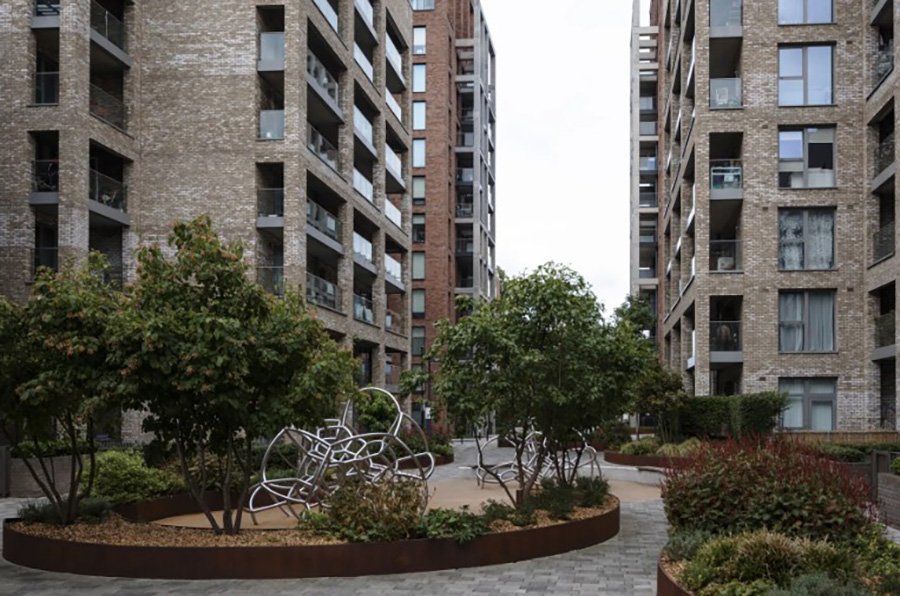читайте также
 Portugal prepares IMT tax increase for foreign homebuyers
Portugal prepares IMT tax increase for foreign homebuyers
 Turkey plans to abolish the all-inclusive system in hotels
Turkey plans to abolish the all-inclusive system in hotels
 How Digital Nomads Are Transforming Cities and Economies
How Digital Nomads Are Transforming Cities and Economies
 Housing Market Bubble Risks in 2025 – UBS Data
Housing Market Bubble Risks in 2025 – UBS Data
 Artificial Intelligence in Tourism: Market to Grow 4.5 Times by 2030
Artificial Intelligence in Tourism: Market to Grow 4.5 Times by 2030
 Spain’s Rental Housing Market: Foreigners Granted Tax Deductions
Spain’s Rental Housing Market: Foreigners Granted Tax Deductions
Вusiness / Real Estate / Investments / News / Analytics / United Kingdom / Real Estate Britain 15.08.2025
UK Housing Construction: Developers Shifting Away from High-Rises

Photo: Bloomberg
UK developers are increasingly abandoning high-rise projects in favor of low-rise housing, Bloomberg reports. Following the Grenfell Tower fire, “high-risk buildings” face additional inspections, and the approval process for such projects can now take months.
In 2021, Greystar Real Estate Partners purchased a site in London’s Battersea for £31 million, planning around 300 rental apartments in a riverside tower. The company submitted the project for approval in late 2024 and has been waiting for a decision for more than 40 weeks. Now, with an asset portfolio of over $300 billion, the developer is shifting investments to low-rise projects, which are not subject to the stringent checks required for buildings over 18 meters high.
Since 2023, such high-rise residential projects have faced three control stages before occupancy. These measures were introduced after the Grenfell Tower tragedy, which was partly attributed to ignoring existing building codes. The government appointed the Building Safety Regulator (BSR) to liaise with developers and oversee compliance, but the workload quickly exceeded capacity. By early June, 78 staff members were reviewing 1,373 “high-risk” project applications. In Q1 2025, the median wait for new project approvals reached 21 weeks, far above the 12-week target. The regulator has had to hire additional personnel.
Developers argue that prolonged checks are changing project economics. Berkeley Group CEO Rob Perrins points to seven buildings awaiting approval for over 40 weeks and warns that under current timelines, buildings above 18 meters simply won’t be built. At Barratt London, around 500 apartments remain stuck awaiting regulator clearance, according to divisional director Craig Carson. Andrew Sondoson, Head of Residential Capital Markets at CBRE UK, noted that delays negatively affect investor returns.
Off-plan sales have fallen, limiting access to bank financing. According to Hamptons, the share of homes sold before completion fell to 31% in 2024 — the lowest since 2012 and nearly half the 2016 peak. OakNorth Bank says regulatory delays force it to model up to two years of deferred interest payments.
Speeding up approvals has become a priority for authorities. In June, BSR announced measures to fast-track around 30,000 applications, including hiring over 100 support staff and running a campaign to recruit registered inspectors. An additional £2.1 million has been allocated to speed up the second stage of checks.
The regulator calls the delays temporary, partly blaming the quality of submitted documents. Timelines were further extended after the bankruptcy of private firm AIS Surveyors, which had assisted in approvals. According to BSR, the affected volume is small: about 30,000 of 1.5 million planned homes — around 2%.
The slowdown adds to the UK’s structural housing shortage. The Centre for Cities estimates a shortfall of around 4 million homes compared to similar European nations. Prime Minister Keir Starmer’s government plans to deliver 300,000 homes annually, but actual output lags behind. Savills forecasts that at current rates, completions will not exceed 170,000 per year. In the year to March 2024, 198,600 homes were finished — 6.5% fewer than the previous year.
Earlier in 2025, Knight Frank analysts recorded signs of a recovery in the UK construction sector. A survey of over 50 major developers found that 61% faced planning delays — the lowest since 2021 and 27 percentage points below the same period in 2024. This was linked to the reinstatement of local housing delivery targets and the easing of “green belt” building restrictions.
The Office for Budget Responsibility then raised its forecast to 1.3 million new homes by the end of the decade, expecting benefits from Labour’s proposed reforms. However, the sector remained under pressure in the affordable housing segment, with about one-third of developers predicting they would build no more than half their targets due to financial constraints, rising costs, and tighter safety standards.
In the second half of the year, the situation appears to have reverted to earlier conditions, though experts say the market is adapting. Developers are reducing teams or shifting activity to other regions, including the Middle East. Greystar is increasing its share of low-rise projects that avoid “high-risk building” requirements. Nick Pleydell-Bouverie of Knight Frank believes that if bureaucratic bottlenecks persist, investors will move towards single-family homes, townhouses, or deploy capital to overseas markets.





